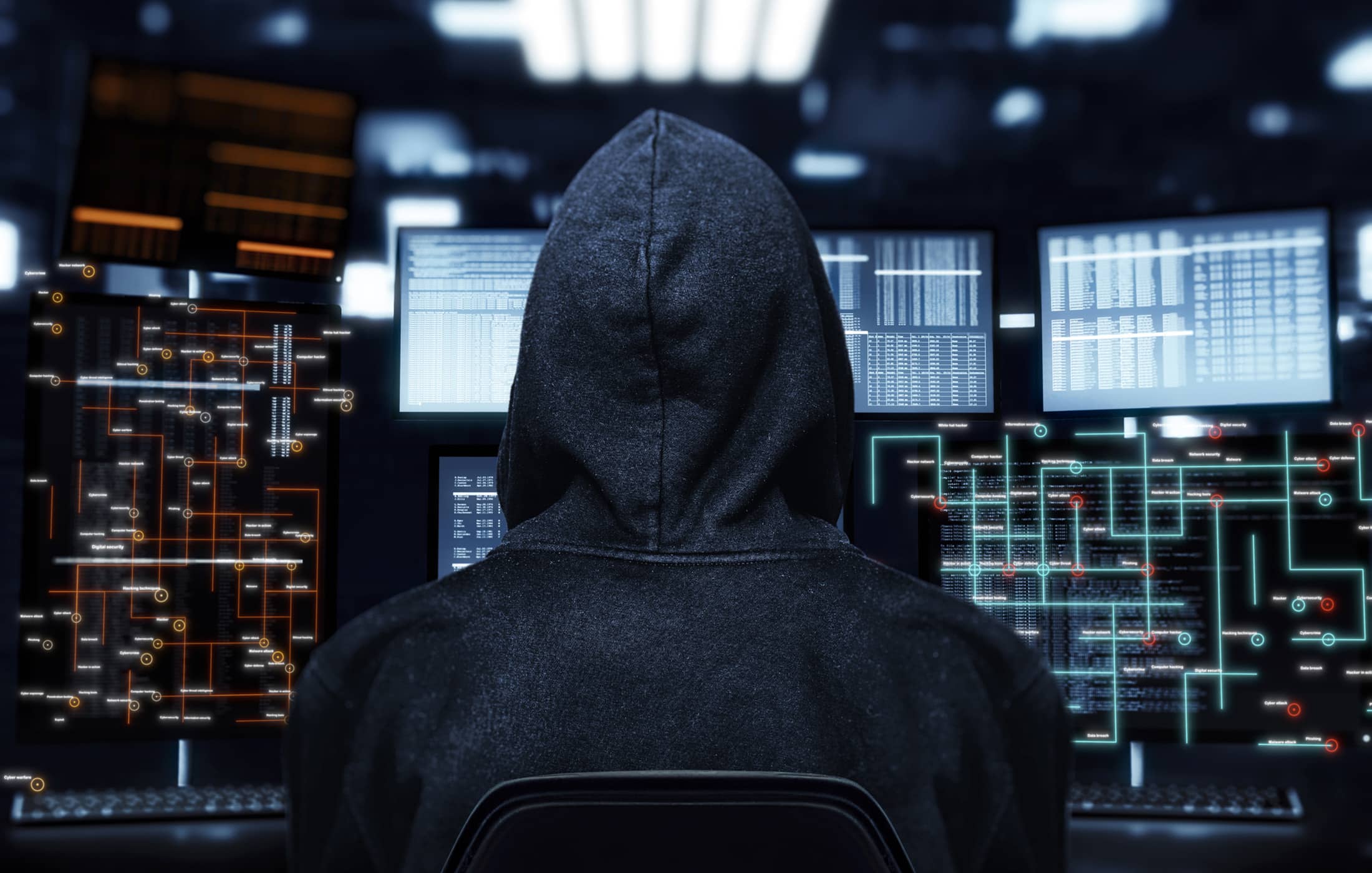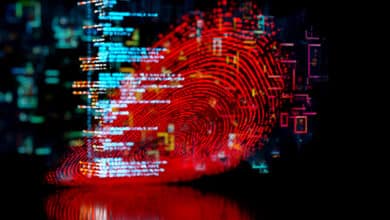Harvest Now, Decrypt Later (HNDL) Risk

Table of Contents
Introduction
In the world of cybersecurity, there’s a ticking time bomb that doesn’t explode today, but could in a decade. It’s linked to the promise and peril of quantum computing. On one hand, quantum computers might solve problems we once thought impossible, from revolutionizing drug discovery to tackling climate modeling. On the other hand, they come with a huge asterisk: a sufficiently powerful quantum computer could break much of today’s encryption – the very encryption that secures our online banking, private messages, government secrets, and more. This looming threat of a “quantum apocalypse” (or Q-Day) isn’t here yet, but it casts a long shadow. And notably, it has given rise to a crafty hacker strategy: “Harvest Now, Decrypt Later,” often abbreviated as HNDL (also known as “Store Now, Decrypt Later”). In simple terms, HNDL is all about stealing your encrypted data now in order to unlock it later when the attackers have the means to do so. It’s like someone stealing a locked safe today, confident that in the future they’ll finally get the keys or master tools to open it.
Why worry about this now if quantum computers capable of cracking encryption are still on the horizon? Because some data has a long shelf life. If you have information that needs to remain secret for years or decades – think state secrets, personal health records, trade secrets – then a future breach could be just as devastating as a present one. HNDL is the quintessential “steal today, crack tomorrow” threat, and it’s increasingly on the radar of security experts and governments worldwide.
The Coming Quantum Threat to Encryption
To understand why HNDL is a serious concern, it helps to grasp the big picture of how quantum computing menaces our current encryption. Modern cryptography – the kind that protects your credit card transactions, business communications, and government databases – relies on certain mathematical problems that are easy to do one way, but extremely hard to undo. For example, multiplying two large prime numbers together is easy, but factoring the result back into the original primes is astronomically hard for classical computers. This “one-way” hardness underpins public key encryption systems like RSA and ECC (elliptic curve cryptography) which are widespread today.
Enter quantum computing. A powerful quantum computer, leveraging principles of quantum mechanics, can run Shor’s algorithm – a method that can solve those factoring and discrete log problems exponentially faster than a classical computer. In non-technical terms, a mature quantum computer could in theory unravel RSA, ECC, and other public-key crypto like a hot knife through butter. It could even significantly weaken symmetric encryption by speeding up brute-force searches (using another algorithm known as Grover’s algorithm). That means the cryptographic locks guarding everything from your bank account login to military communications might pop open effortlessly under a quantum assault. Little wonder that observers have warned of a coming quantum cryptography crisis – the moment (Q-Day) when currently encrypted data is no longer safe at all.
Crucially, we’re not at Q-Day yet. Experts estimate that crypto-breaking quantum computers (sometimes called cryptographically relevant quantum computers, or CRQCs) are still years away – perhaps a decade or more, though predictions vary. Building stable, large-scale quantum machines is a massive scientific challenge, and while progress is steady, we haven’t hit the threshold where these algorithms become an immediate threat. So, why not just relax for now and deal with it later? Well, that’s exactly the complacency that HNDL exploits. If you believe you can wait until the eve of Q-Day to safeguard your data, you may be in for a nasty surprise: adversaries could be stealing your encrypted data right now, patiently stockpiling it for that future when quantum decryption becomes feasible.
What is “Harvest Now, Decrypt Later”?
Harvest Now, Decrypt Later (HNDL) is a strategy that flips the usual urgency of hacking on its head. Traditionally, when attackers steal encrypted data, it’s of limited use to them unless they can break the encryption relatively quickly. HNDL attackers, however, play the long game. They intercept or exfiltrate your encrypted information today and then sit on it – for years if needed – until technology (like quantum computing) advances enough to decrypt it with ease. In essence, the attacker is banking on tomorrow’s breakthroughs to crack today’s secrets. It’s a bit like a high-tech time capsule of stolen data, buried in anticipation of a day when the capsule can be unlocked.
This concept is also aptly nicknamed “Store Now, Decrypt Later” – emphasizing that the data is stored for future decryption rather than attacked immediately. HNDL is often described as a quantum-era risk, but interestingly, the idea isn’t entirely new. In fact, renowned cryptographer Whitfield Diffie points out that this tactic was used during and after World War II: U.S. intelligence routinely recorded Soviet encrypted communications and held onto them, eventually decrypting many of them years later when computing power or cryptanalysis techniques improved. In Diffie’s words, “(HNDL) is at the heart of signals intelligence. There are vast tape libraries at NSA… running back decades.” In other words, intelligence agencies have long engaged in “harvest now, decrypt later” – just with traditional codebreaking methods. The difference today is that quantum computing could supercharge this approach, making a much wider range of data vulnerable in the near future.
So how does a HNDL attack actually happen in practice? The mechanics are straightforward: an adversary might tap into network traffic, hack into a server, or otherwise steal bundles of encrypted data – but without bothering to crack it immediately. There’s no obvious breach visible to the victim; the encrypted files are still encrypted, after all. Your systems and logs might not even register a serious incident if the attacker stealthily copies data rather than disrupts services. It’s a silent, patient form of theft. The attacker then archives that data in some secure cache. Years pass. Then one day, decryption technology matures – say a functional quantum computer is online, or even some new powerful classical algorithm is discovered – and that long-forgotten trove of stolen data suddenly becomes a gold mine. Medical records swiped in 2023 could be decrypted in 2032 and sold or misused. Military plans or diplomatic cables from this year might be shockingly revealed a decade from now. The victim might not even realize their data was stolen until it’s decrypted and exposed later, because at the time of theft nothing seemed amiss.
Not all data is equally appetizing for HNDL attackers. The ideal targets are information with long-term sensitivity or value. Think of things like: government and military secrets, which may retain strategic importance for decades; personal data such as health records (your DNA or medical history will be sensitive about you for your entire lifetime) ; financial records and legal documents that could be exploited for fraud or blackmail; intellectual property like proprietary formulas or tech designs that competitors would love to get their hands on. By contrast, some data loses value quickly – for example, your credit card number might change next year, or a password dump might be useless once passwords are reset. Interestingly, attackers know this and might not bother storing ephemeral secrets like one-time financial transaction tokens or short-lived encryption session keys. The HNDL gambit is all about playing the odds: invest in stealing data that is likely to pay off down the line. As one cybersecurity blog noted, attackers will focus on data that will still be sensitive in five or ten years and worth the effort of decryption. If it won’t matter by the time they crack it, it’s not worth storing.
However, there’s a flip side: since no one can predict perfectly what data will be valuable in the future, some well-resourced adversaries may just hoover up anything and everything they can get, on the chance it becomes useful. Thanks to the ever-dropping cost of digital storage and ever-increasing global connectivity, the barriers to mass data harvesting are lower than ever. In fact, intelligence agencies or nation-state hackers might essentially record large swaths of internet traffic (which is largely encrypted these days) and keep it indefinitely, creating a huge backlog of intercepted data. Some attackers won’t even bother to cherry-pick – they’ll just collect it all like a data vacuum, on the premise that even if 90% is junk, the remaining 10% could hold some future gems.
It’s worth noting that HNDL is primarily a concern for confidentiality of data (secrecy). There’s a closely related quantum threat to data authenticity often termed “Trust Now, Forge Later (TNFL)”, which involves forging digital signatures once quantum computers can break them. While TNFL is beyond our scope here, it’s essentially the signature/integrity side of the same coin – for example, an attacker could let code-signing certificates remain trusted now, and plan to forge them later when quantum capabilities allow, thus undermining integrity of software and documents. Together, these “steal now, break later” and “trust now, fake later” scenarios form twin threats in a quantum future. Both underscore the broader point: security measures that seem unassailable today may have an expiration date once quantum computing matures. HNDL just happens to be the facet that endangers the confidentiality of today’s secrets.
Is HNDL Happening Already?
All this might sound a bit like science fiction – akin to a spy thriller where stolen files sit in a vault until a super-computer cracks them years later. But cybersecurity experts and government agencies increasingly agree that HNDL is a clear and present danger, not just a hypothetical one. In fact, many believe it’s already underway in the wild. The tricky part is proving it: if someone has stolen your encrypted data but not yet broken it, how would you know? There’s no immediate fallout, no ransom note, no system disruption. It’s a heist that leaves the loot seemingly intact (since you still have your encrypted files) and uses time as a cloak for the crime.
Despite this stealthy nature, there are strong clues pointing to active HNDL-like activity. Western intelligence agencies have warned for a few years now that certain nation-state adversaries are “harvesting” encrypted communications on a massive scale, specifically with the intent of decrypting them later when able. The U.S. government – including bodies like the National Security Agency (NSA) and Cybersecurity & Infrastructure Security Agency (CISA) – has publicly sounded the alarm. They’ve issued guidance that urges organizations to prepare now for quantum threats by transitioning to quantum-resistant encryption, implicitly acknowledging that any delay leaves data at risk of silent collection by enemies. In a way, this guidance itself is evidence: agencies wouldn’t be pushing urgent action if they didn’t strongly suspect that data is being gathered now for future exploitation.
Beyond official warnings, consider some peculiar real-world incidents. Over the past decade, there have been multiple cases of internet traffic mysteriously rerouted through unexpected countries – often ones known for heavy cyber-espionage operations. In 2016, for example, a chunk of Canadian internet traffic destined for South Korea was inexplicably diverted through China, exposing that data en route to prying eyes. In 2019, a similar incident saw European mobile phone traffic briefly travel through Chinese servers. And in 2020, a large swath of data from major tech companies (Google, Amazon, Facebook and more) was suddenly misdirected through Russia, in what looked like a coordinated BGP hijacking. Even during the 2022 Russo-Ukrainian conflict, there were reports of Russian telecom operators rerouting Ukrainian internet traffic through Russia. All of these incidents have a common theme: they could be interpreted as attempts to siphon off and store encrypted data traveling between major hubs, likely for intelligence purposes. While the public doesn’t have proof that “quantum decrypt later” was the intent, it fits the HNDL modus operandi – intercept now, hold it in your archives, and figure out decryption later. At the very least, it shows a pattern of large-scale data interception by nation-states, which is exactly the first step of an HNDL attack.
Security researchers also note that much of the espionage conducted by state actors blurs the line between government and corporate targets. It’s not just about military secrets. For instance, Chinese hackers have been notorious for stealing intellectual property – designs for advanced jet engines, source code for software, chemical formulas, you name it. While in many cases they might use those secrets immediately for economic advantage, one can imagine that encrypted proprietary data (say, an encrypted R&D database or confidential emails within a tech company) could be quietly collected now and decrypted later to leapfrog in the global tech race. Commercial data (from pharmaceuticals to automotive designs to cutting-edge AI research) can be just as juicy a target for state actors as traditional state secrets. If those industries rely on encryption that will be obsolete in ten years, their crown jewels might be sitting in an adversary’s data warehouse, countdown ticking until decryption day.
We should also consider the scale of general data breaches happening. Even if the attackers are not explicitly saying “we’re doing this for quantum decryption,” the sheer volume of stolen data out there is staggering – and much of it is stolen in encrypted form. Most of those attackers today are looking for immediate payoffs (like ransom or fraud), but all that stolen data could also be repurposed later. It’s not hard to imagine that nation-state intelligence agencies are quietly plundering the same troves alongside cybercriminals – perhaps even letting the criminals do the initial breach, then swooping in via backdoors to copy the data for their own long game. Because a quantum computer in 2032 doesn’t care whether the data came from a “secure” breach in 2023 – it will crack it just the same.
The second half of the HNDL equation – the decrypt later – is still speculative. We don’t know exactly when quantum decryption will become possible, nor how expensive or accessible it will be initially. Early quantum computers capable of code-breaking might be extremely costly to operate, meaning an attacker would only decrypt truly high-value data (like nuclear secrets or billion-dollar IP). This is a valid point: the first generation of quantum code-breaking might be a slow and expensive process, done only by superpowers or major corporations. Over time, what seems infeasible can quickly move into the realm of feasible – and then into trivial. A quantum leap (pun intended) in capability can turn yesterday’s fortress into today’s sieve.
In short, while we can’t point to a news headline that reads “Hackers Use Quantum Computer to Decrypt Stolen Data,” the precursors of that scenario are all around us. HNDL is recognized by the cybersecurity community and governments as a real threat, and it aligns with the observed tactics of nation-state hackers. It’s the kind of threat that by the time it fully materializes, it’s too late to defend against – because the vulnerability lies in actions (or inaction) today. Which brings us to the all-important question: what can we do about it?
Defending Today Against Tomorrow’s Threat
The good news is that HNDL, while daunting, is not a hopeless threat. It basically challenges us to think ahead in our security strategies – to protect data now in ways that will remain strong later. This means preparing for a post-quantum world before it arrives. Organizations and individuals alike have several ways to get ahead of the HNDL risk:
Identify Your Long-Lived Secrets
Start by figuring out what data you have that would still matter if exposed in 5, 10, or 20 years. Is it customer personal information? Intellectual property and design plans? Strategic business documents? For governments it might be state secrets; for a company, maybe it’s patented formulas or an archive of confidential emails. Perform a risk assessment focusing on data longevity: if this file were decrypted in 2032, would it cause damage? If the answer is yes, that data is a prime HNDL target right now.
Knowing what’s most sensitive in the long term helps you prioritize what to protect first.
Harden Defenses Against Data Theft
Since HNDL relies on stealing data in the first place, doubling down on your conventional security to prevent breaches is critical. This might sound obvious, but it’s worth emphasizing: even quantum encryption won’t matter if an attacker can just hack in and copy your database. Use strong access controls, network security monitoring, intrusion detection, and all the usual cyber hygiene to make it as hard as possible for someone to exfiltrate your data. Consider that during this interim period (before quantum-safe crypto is fully deployed), your best bet is to keep adversaries from getting the data at all. Techniques like data loss prevention (DLP) systems, encryption of data at rest, and robust insider threat programs can mitigate the risk of large-scale data theft.
In essence, fortify the vault so even if the lock might weaken in the future, thieves can’t get their hands on the contents now.
Adopt a Crypto-Agility Mindset
“Crypto-agility” means being able to swap out and upgrade your cryptographic tools with minimal disruption. Given that new post-quantum cryptography (PQC) algorithms are emerging to replace RSA, ECC, and other vulnerable algorithms, organizations should prepare to roll those out as soon as they’re standardized and proven. NIST (National Institute of Standards and Technology) has been running a multi-year project to vet and standardize quantum-resistant algorithms. In 2022, NIST announced the first batch of winners (like CRYSTALS-Kyber for encryption key exchange, and CRYSTALS-Dilithium and others for digital signatures). The takeaway: don’t wait until quantum computers are in headlines to start your transition. If you run a company, begin the planning now – inventory all the places you use crypto (TLS certificates, VPN, code signing, databases, etc.) and determine what needs changing.
Many governments are already mandating this; for instance, the U.S. NSA has issued guidelines (CNSA 2.0 suite) with timelines for government systems to go quantum-safe. Your organization should have a roadmap too. This might involve experimenting with “hybrid” encryption (combining classical and post-quantum algorithms), upgrading libraries and hardware that support longer key sizes or new algorithms, and perhaps prioritizing the most sensitive systems for early adoption of PQC.
The transition won’t happen overnight – it’s a massive effort akin to the Y2K preparations or the migration from 32-bit to 64-bit computing, and early movers will have an advantage.
Mind the (Quantum) Gap
There’s likely to be a period where not everyone has upgraded to quantum-safe encryption. During this window, HNDL attackers might have their best opportunities. One pragmatic step is to encrypt data with stronger variants of classical crypto as a stopgap, buying more time.
For example, if you’re using 2048-bit RSA, moving to 4096-bit RSA or switching to elliptic curves with larger keys might offer additional safety margin (though not full protection against quantum, it could slow down classical attacks and perhaps even some quantum attempts).
Likewise, using AES-256 instead of AES-128 for symmetric encryption doubles the key length and makes brute-force twice as hard, which is advisable since Grover’s algorithm can roughly cut the strength of symmetric keys in half.
These measures are no panacea, but they strengthen your crypto wall in the interim.
Stay Informed and Collaborate
The quantum threat landscape is evolving, and so are the defenses. It pays to stay updated through industry groups, conferences, and collaborations. Many sectors (finance, healthcare, telecom, etc.) have task forces or consortiums now for post-quantum readiness. Sharing knowledge and solutions can accelerate progress – after all, if one company finds a clever way to implement PQC with minimal slowdown, that insight could help others.
There is a broad recognition that quantum security is not a competitive arena but a collective one: a break in encryption undermines trust across the digital ecosystem, so everyone benefits by raising the bar. Governments around the world are also working together (to the extent that they can while still in a tech race) by coordinating standards and research.
Keep an eye on guidance from agencies like NIST, CISA, ENISA (in Europe), etc., as well as any regulations that might emerge requiring quantum-proofing (some sectors may eventually face compliance rules for this, similar to how GDPR imposed data security requirements).
Educate and Prepare Your Team
Finally, a “people strategy” is vital. Train your IT and security teams about quantum threats so they understand why these changes are necessary. Sometimes the hardest part of upgrading crypto is convincing stakeholders that the risk is real before the disaster is visible. Use the analogy of HNDL to explain the stakes to executives in charge of budget: we either invest in quantum-safe security now, or we risk that our encrypted crown jewels get quietly stolen and cracked later. Regular training sessions, drills, or even table-top exercises on post-quantum scenarios can make the abstract threat more concrete.
The goal is to avoid the “we’ll cross that bridge when we come to it” mentality. By the time you’re crossing that bridge, it may have already been washed out by the quantum flood.
To summarize the defense game plan: know what data you need to safeguard for the long haul, secure it against theft today, and expedite its migration to stronger cryptography for tomorrow. As one cybersecurity executive bluntly put it, “The best time to start preparing was five years ago. The next best time is right now.” Future-proofing your encryption isn’t just a lofty ideal – it’s fast becoming a practical necessity to preserve confidentiality in the era of quantum computing.
Don’t stop at HNDL: Trust Now, Forge Later (TNFL)
Most readers now recognize HNDL as a confidentiality problem: adversaries stockpile encrypted data today, intending to unlock it with future quantum capabilities. The failure mode is delayed disclosure.
But there’s a quieter twin you must plan for as well: “Trust Now, Forge Later” (TNFL). TNFL is the digital‑signature analogue of HNDL – once a cryptographically relevant quantum computer arrives, Shor’s algorithm collapses the hardness assumptions behind RSA and elliptic‑curve signatures. An attacker who can derive your private key from your public key can mint new, valid signatures that look indistinguishable from yours – on software updates, firmware, documents, certificates, transactions – so integrity, authenticity, and non‑repudiation fail at scale.
Why TNFL can be worse than HNDL: decryption of hoarded ciphertext is a slow burn; forging signatures can be immediate and systemic once keys fall. TNFL does not require stealing your data – only computing your signing key – so the attack scales to every place your public key is trusted. Long‑lived or hard‑to‑rotate trust anchors amplify the blast radius: embedded/industrial devices, e‑passports, satellites, and supply‑chain signing services frequently use keys with multi‑year lifetimes or limited update paths.
PQC key exchange ≠ PQC trust. Many roadmaps start by swapping RSA/ECDHE for ML‑KEM (Kyber) to protect session keys in TLS and stop future decryption – good for HNDL. But unless you also migrate signatures, you remain exposed to TNFL. NIST has already finalized quantum‑resistant signature standards – ML‑DSA (Dilithium) and SLH‑DSA (SPHINCS+) – and organizations should begin adopting them for code signing, PKI, document signing, and device attestation as those stacks become available. Standards bodies are integrating these schemes (e.g., CMS profiles for ML‑DSA), so the ecosystem is rapidly maturing.
Conclusion
“Harvest Now, Decrypt Later” may sound like a plot out of a cyberpunk novel, but it’s very much a real-world concern in our quantum-aware age. It forces us to rethink the old assumptions about data security. We used to assume that if our data was safely encrypted by today’s standards, we could tuck it away and sleep soundly. HNDL turns that comfort on its head: your data might be safe for now, but what about in ten or fifteen years? The actions adversaries take today – quietly stockpiling encrypted info – and the actions we take (or fail to take) in response will determine whether the secrets of the 2020s stay secret into the 2030s and 2040s.
The key message is one of urgency but not panic. We have a window of opportunity right now to get ahead of this threat. The quantum computers capable of cracking RSA and the like are under development, not yet deployed in the wild against our encryption. This means every organization has the chance to raise shields before the storm hits. Think of it like preparing for a known incoming hurricane: you reinforce the house, stock up supplies, evacuate what’s most precious to safer ground. In cyber terms, that means fortifying networks to prevent data theft, transitioning to quantum-resistant encryption (or at least mapping out how you will soon), and generally cultivating a culture of crypto-agility and forward-thinking security.
Quantum Upside & Quantum Risk - Handled
My company - Applied Quantum - helps governments, enterprises, and investors prepare for both the upside and the risk of quantum technologies. We deliver concise board and investor briefings; demystify quantum computing, sensing, and communications; craft national and corporate strategies to capture advantage; and turn plans into delivery. We help you mitigate the cquantum risk by executing crypto‑inventory, crypto‑agility implementation, PQC migration, and broader defenses against the quantum threat. We run vendor due diligence, proof‑of‑value pilots, standards and policy alignment, workforce training, and procurement support, then oversee implementation across your organization. Contact me if you want help.



